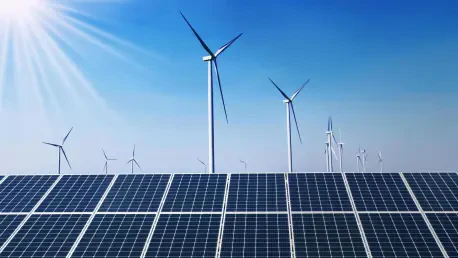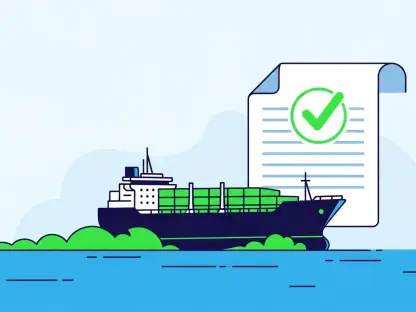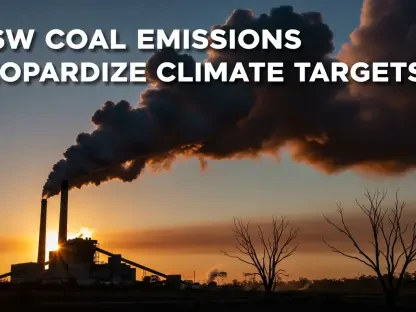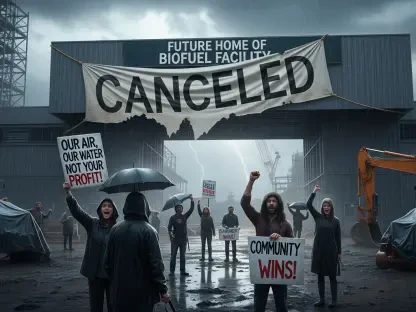In today’s rapidly evolving energy landscape, Christopher Hailstone stands out as a seasoned expert specializing in energy management, renewable energy, and electricity delivery. He has a wealth of knowledge on grid reliability and security and is keenly observant of the shifts in government policies concerning these sectors. Given his expertise, we explore the implications of recent policy changes and their impact on the renewable energy and utilities industry.
With the Trump administration moving to rescind a regulation that lowered fees for renewable energy projects, what steps are they taking to achieve this?
The Trump administration’s approach involves a systematic rollout in collaboration with the Interior Department, which first reviews and then proposes the rescission for public commentary. The White House plays a crucial role in overseeing the process before it’s officially introduced.
The regulation finalized in 2024 significantly cut project fees for wind and solar energy. How was this intended to support renewable energy projects?
The fee reductions were meant to stimulate investment in wind and solar energy developments by making them more economically viable on federal lands. The aim was to lower the barrier of high fees that had long been a sticking point for developers, helping to advance clean energy initiatives.
Developers have expressed concerns about the initially high fees for wind and solar projects. Can you elaborate on why these were problematic?
The fees were considered prohibitive, making it difficult to justify investment in renewable projects on federal lands. High costs deterred potential development, stifling growth opportunities that were crucial for achieving clean energy targets.
Could you explain the Interior Department’s process for rescinding the regulation, and the role of the White House in this scenario?
The Interior Department first reviews the proposed rollback, followed by oversight and approval from the White House before opening it up for public commentary. It is a multi-step procedure, reflecting the administration’s broader agenda to align with Trump’s energy policy goals.
How does the Trump administration’s stance on renewable energy compare with its focus on oil and gas development?
There’s definitely a stark contrast. While the administration is pulling back support for renewables, it is simultaneously accelerating oil and gas development on federal lands. This dual approach signals a preference for traditional energy sources over clean alternatives.
What are the primary elements of the Trump administration’s strategy to fast-track oil and gas development?
The strategy involves shrinking review times for land parcels, potentially cutting approval periods by half, to just six months. This is intended to expedite the development process, align land use plans, and push forward the administration’s energy dominance goals.
How could this accelerated approval process affect environmental reviews and public health?
By cutting down review times, there’s a risk that environmental assessments may be rushed, potentially overlooking vital public health and ecological considerations. Environmental groups have voiced concerns that such policies might prioritize industry interests over sustainable practices.
What issues have environmental organizations raised in response to the Trump administration’s energy policies?
They argue that these policies serve corporate interests more than they protect environmental and public health. Concerns revolve around omissions in critical evaluations, increased pollution, and compromised natural ecosystems.
How are industry groups like Advanced Energy United reacting to these environmental policy shifts?
Advanced Energy United has launched a targeted ad campaign to oppose these changes, focusing on lawmakers in districts benefiting from investments tied to the Inflation Reduction Act. They’re pushing to highlight the economic significance of maintaining clean energy incentives.
What is the focus of Advanced Energy United’s national ad campaign, and which lawmakers are they targeting?
The campaign aims to protect clean energy investments and targets lawmakers in key states that have financially benefited from the Inflation Reduction Act. They’re delivering a message that sustaining these investments is critical for economic and environmental prosperity.
What provisions of Biden’s Inflation Reduction Act are at risk according to the House Ways and Means committee?
The committee has proposed phasing out or canceling subsidies related to wind, solar power, hydrogen, and other technologies crucial for reducing greenhouse gas emissions. These actions threaten the foundation of Biden’s climate agenda.
Does Target’s shift in its diversity, equity, and inclusion program relate to its current business performance, and how?
Yes, Target’s changes are directly related to challenges in business performance. They’ve opted for a strategy that focuses more on increasing relevance with consumers and attracting a diverse workforce, believing this will drive better business results.
What were Target’s previous diversity program goals, and how are they shifting now?
The program initially aimed at increasing the percentage of Black employees significantly over a three-year period. The new direction isn’t abandoning diversity but rather aligns it with broader business objectives to attract talent that strengthens consumer engagement.
Why does Target’s new strategy prioritize boosting relevance with U.S. consumers and what impact does this have on talent attraction?
The focus is on aligning business strategies with evolving consumer interests to enhance market appeal. By doing so, Target also positions itself as an attractive employer, diversifying its talent pool to drive growth and innovation.
How do you think awareness of policy changes like these impacts consumer behavior and corporate strategies over the long term?
Awareness plays a critical role in shaping both consumer behavior and corporate strategies. Companies that successfully navigate regulatory landscapes and adjust to consumer expectations will likely see sustained growth, whereas others may struggle amidst shifting political and social norms.









